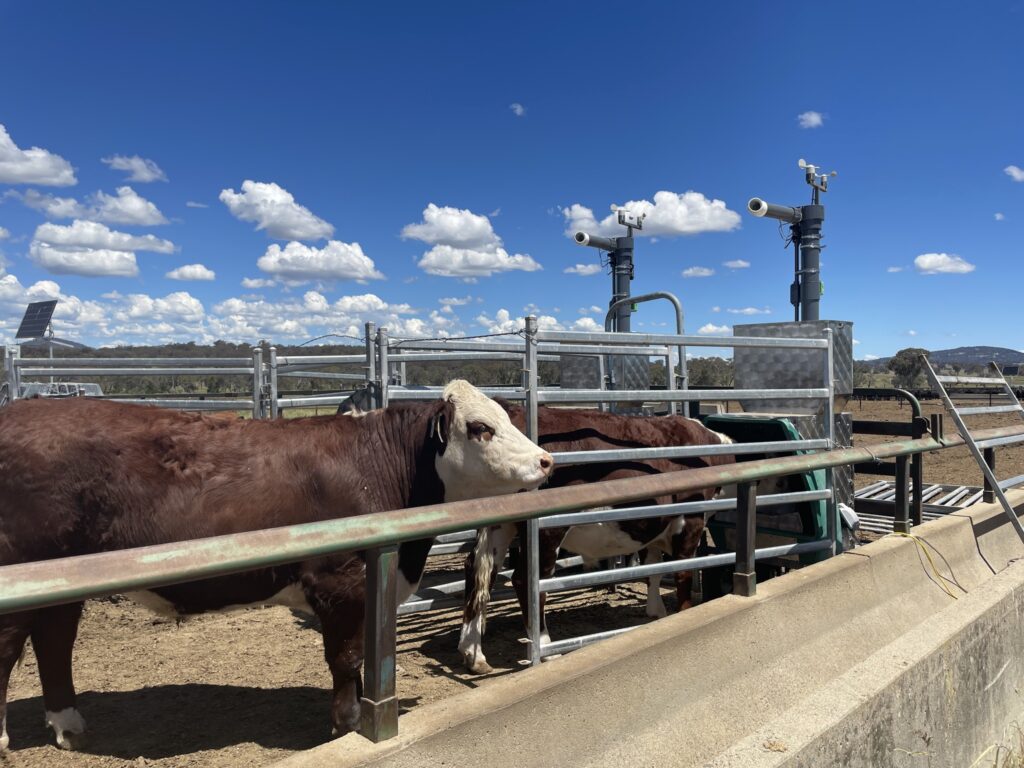The Southern Multi Breed (SMB) project is a collaborative Research and Development project involving NSW DPI and the University of New England that is being conducted over five years from 2020 to 2025. The project is co-funded by NSW DPI, UNE, Meat & Livestock Australia (MLA) and the Commonwealth Government through the MLA Donor Company (MDC).
The project builds a dataset for six major cattle breeds (Hereford, Angus, Wagyu, Charolais, Shorthorn and Brahman) of hard-to-measure traits such as those influencing female reproductive performance (such as anoestrus, age at puberty), meat quality, carcass traits and feed efficiency. This dataset will be included in the Hereford BREEDPLAN analysis and combined with the reference population data from previous Hereford BIN projects, co-operator herds and breeders’ herds to improve the accuracy of Genomic EBVs.
The SMB project also provides the starting point for building a reference population for a new age of multi-breed genetic evaluation. This type of evaluation will give Hereford breeders the ability to benchmark their herd’s genetic merit against a wider range of breeds and will ultimately allow bull buyers to determine which bulls best suit their needs comparing each breed on the same basis.
All calves generated by the projects are intensively recorded from birth to the end of backgrounding (steers)/grow-out (heifers). Recording includes accurate recording of birth date, birth weight, calving ease and survival, gestation length (AI calves only), weaning weight, flight time, docility score, yearling weight, and structure. Other traits, such as worm egg count, are recorded regularly beginning at weaning and continuing until the steers enter the feedlot and the heifers wean their first calf. Following weaning, the heifers have regular ovarian assessments conducted using real-time ultrasound performed by highly skilled ultrasonographers to determine follicle development and identify the attainment of puberty. All first-lactation cows are regularly scanned after calving to determine their return to cycling. Females have live weight, hip height, body condition score, eye muscle and subcutaneous fat depth recorded prior to mating and at weaning each year, and are assessed for calving ease, teat and udder score at calving. Steers have weight and scan traits, as well as net feed intake, recorded while in the feedlot, with full abattoir, meat quality and consumer testing undertaken following slaughter. All animals are genotyped in alignment with BREEDPLAN standards to allow their data to contribute to single-step genetic evaluations.
As well as the traits mentioned above, two additional overlay projects led by the University of New England and CSIRO, and supported by MLA, are utilising the calves born in SMB project to measure methane emissions using Grow Safe feeders and immune competence records.
The SMB project has just finished the third year of the five-year project with the fourth group of calves having recently been born. Approximately 50% of these calves are the progeny of heifers born during the first year of the project. The project has now in excess of 1,400 Hereford (6,000 across all breeds) birth records including calving ease, 980 Hereford (4,500 all breeds) weaning records, 240 Hereford (1,100 all breeds) feedlot and carcass records and 270 Hereford (1,200 all breeds) heifer puberty and fertility records. The project will continue to generate more data in the coming years particularly for the traits measured later in life.
The data collected by the project to date has been collated ready for entry into within-breed BREEDPLAN evaluations. Herefords Australia staff are currently working with SMB project staff and ABRI to combine this information with the Hereford dataset and test its impact on our BREEDPLAN evaluation results. This data will add significant accuracy to published EBVs such as those for carcase and days-to-calving traits.








